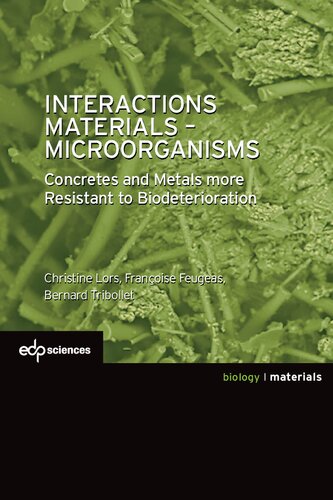

Most ebook files are in PDF format, so you can easily read them using various software such as Foxit Reader or directly on the Google Chrome browser.
Some ebook files are released by publishers in other formats such as .awz, .mobi, .epub, .fb2, etc. You may need to install specific software to read these formats on mobile/PC, such as Calibre.
Please read the tutorial at this link: https://ebookbell.com/faq
We offer FREE conversion to the popular formats you request; however, this may take some time. Therefore, right after payment, please email us, and we will try to provide the service as quickly as possible.
For some exceptional file formats or broken links (if any), please refrain from opening any disputes. Instead, email us first, and we will try to assist within a maximum of 6 hours.
EbookBell Team

4.4
82 reviewsThis multidisciplinary book is the result of a collective work synthesizing presentations made by various specialists during the CNRS «BIODEMAT» school, which took place in October 2014 in La Rochelle (France). It is designed for readers of a range of scientific specialties (chemistry, biology, physics, etc.) and examines various industrial problems (e.g., water, sewerage and maintaining building materials).
Metallic, cementitious, polymeric and composite materials age depending on their service and operational environments. In such cases, the presence of microorganisms can lead to biodeterioration. However, microorganisms can also help protect structures, provided their immense possibilities are mastered and put to good use.
This book is divided into five themes related to biocolonization, material biodeterioration, and potential improvements to such materials resulting in better performance levels with respect to biodeterioration:
• physical chemistry of surfaces;
• biofilm implication in biodeterioration;
• biocorrosion of metallic materials;
• biodeterioration of non-metallic materials;
• design and modification of materials.
The affiliations of the authors of the various chapters illustrate the synergy between academic research and its transfer to industry. This demonstrates the essential interaction between the various actors in this complex field: analysing, understanding, and responding to the scientific issues related to biodeterioration.